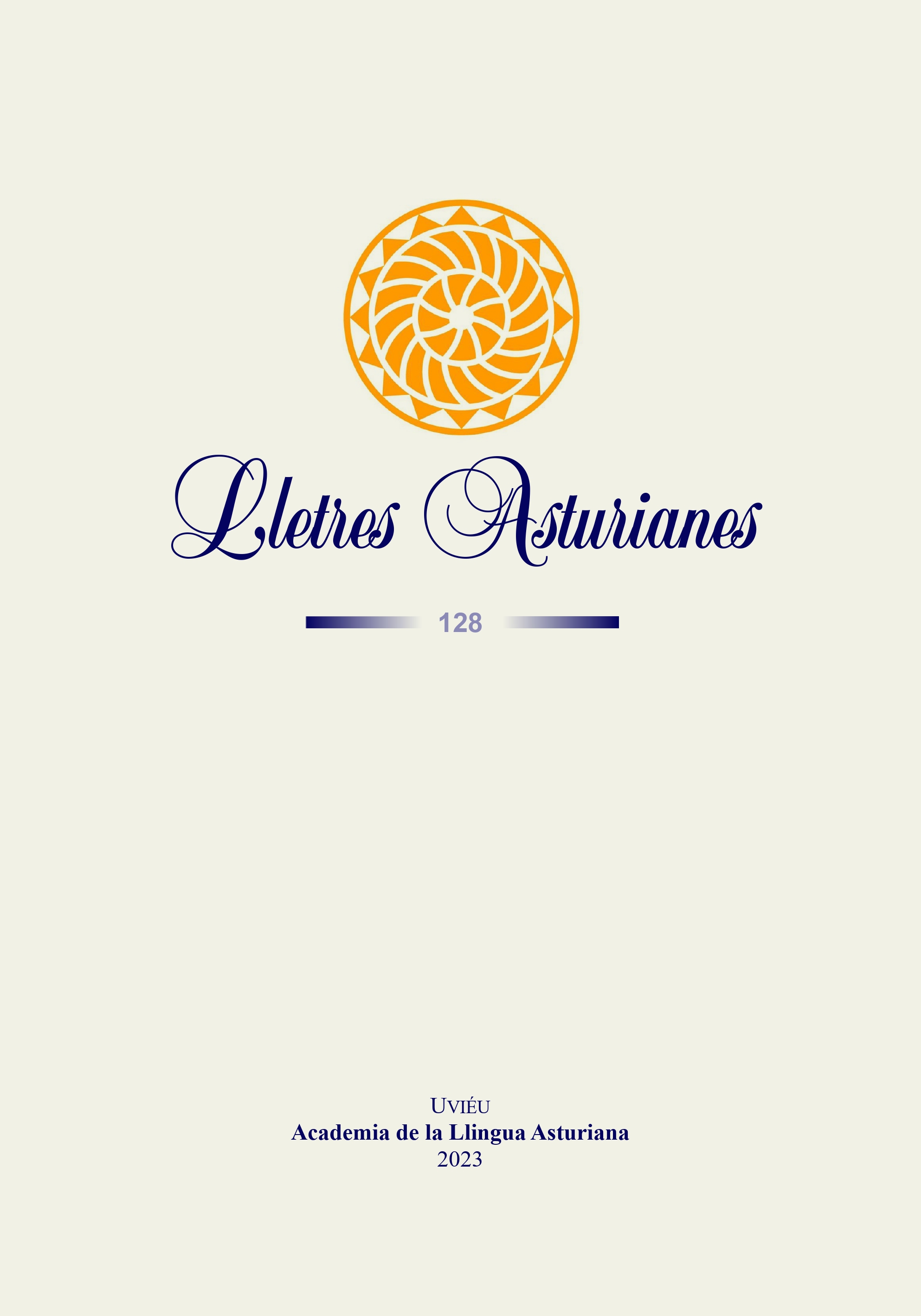Abstract
Bilingualism between any two languages produces cross-linguistic effects in the interpretation and production of each. In this investigation, we examine the perception of two linguistic features from Asturian in Castilian speech production by two groups of participants: (i) speakers of Castilian and (ii) bilingual Castilian/Asturian speakers. Pronominal enclisis in sentences such as ‘Vila ayer’(‘I saw her yesterday’) is an Asturian feature that forms part of the dialectal continuum that d’Andrés (2002) calls Asturianu Mínimu Urbanu (AMU), which is a variant of Asturian spoken in populated centers of the region and is characterized by significantly widespread contact with Castilian. Mass neuter, or neutru de materia, is an agreement feature consisting of adjectival agreement in -o with certain continuous nouns found in what d’Andrés (2002) calls Asturianu Total (AT), which describes the least-Castilianized system of the Asturian language that is spoken in rural zones with less intense contact with Castilian. This linguistic feature is less extended than pronominal enclisis geographically. We conducted an experiment consisting of a Bilingual Language Profile questionnaire, a naturalness judgment test, and a matched guise task. The results of this investigation suggest that speakers from both groups have a perception of enclisis forms in Castilian (associated with AMU) as being more natural than noncount agreement (associated with AT), and even monolingual Castilian speakers accept enclisis as a natural form in Castilian from Asturias. However, both groups indicate that their perception of Asturian features is not very professional. We analyze these results considering potential social consequences of these perceptions and linguistic ideologies about bilingualism.
References
Andrés, R. d’ (2002). L’asturianu mínimu urbanu. Delles hipótesis. Lletres Asturianes, 81, 21-38.
Andrés, R.d’ (2020). Contacto de lenguas en Asturias: Asturiano, «amestáu» y castellano. En Variedades lingüísticas en contacto na Península Ibérica (pp. 47-79). Santiago de Compostela: Consello da Cultura Galega.
Birdsong, D., Gertken, L. M. & Amengual, M. (2012). Bilingual language profile: An easy-to-use instrument to assess bilingualism. COERLL. University of Texas at Austin.
Cherry, K. (2020). How Priming Affects the Psychology of Memory.
https://www.verywellmind.com/priming-and-the-psychology-of-memory-4173092
Escoriza-Morera, L. (2021). Planificación lingüística y desarrollo de lenguas minoritaria. Rilce: Revista de Filología Hispánica. 37(2), 547-566.
Fernández-Ordóñez, I. (2006). Del Cantábrico a Toledo: El «neutro de materia» hispánico en un contexto románico y tipológico (primera parte). Revista de Historia de la Lengua Española, I, 67-118.
García, O. & Torres, R. (2009). Monoglossic ideologies and language policies in the education of US Latinas/os. In Handbook of latinos and education (pp. 208-219). London: Routledge.
Gómez Seibane, S. (2019). El peso de la norma lingüística en la configuración del castellano del País Vasco: una mirada al siglo XIX. En La configuración histórica de las normas del castellano (pp. 249-267). València: Tirant Lo Blanch.
González López, V. (2013). Asturian identity reflected in pronoun use: Enclisis and proclisis patterns in Asturian Spanish. En 6th Workshop on Spanish Sociolinguistics (pp. 76-86). Cascadilla Proceedings Project.
Grenoble, L. A. & Singerman, A. R. (2014). Minority languages. Oxford: Oxford University Press. DOI: 10.1093/obo/9780199772810-0176
Grosjean, F. (2010). Bilingual: Life and reality. Harvard: Harvard University Press.
Grosjean, F. (2013). Bilingualism: A short introduction. En F. Grosjean, & P. Li (Eds.), The psycholinguistics of bilingualism (pp. 5-25). Hoboken, New Jersey: Wiley-Blackwell.
Grosjean, F. (2015). Bicultural bilinguals. International journal of bilingualism, 19(5), 572-586.
Hevia, Isabel. (2018). Los jóvenes y la lengua asturiana. Avance de resultados. Conseyu de la Mocedá del Principáu d’Asturies y Academia de la Llingua Asturiana.
Klee, C. A. & Lynch, A. (2009). El español en contacto con otras lenguas. Georgetown: Georgetown University Press.
Lipski, J. M. (2015). From ‘more’ to ‘less’: Spanish, Palenquero (Afro-Colombian creole) and gender agreement. Language, Cognition, and Neuroscience, 30:9, 1144-1155.
Lipski, J. M. (2018). Can agreement be suppressed in second-language acquisition? Data from the Palenquero–Spanish interface. Second Language Research, 34(3), 309-341.
Llera Ramo, F. J. (2017). III Estudio sociolingüístico de Asturias. La recuperación del asturiano. Uviéu: Academia de la Llingua Asturiana.
Matras, Y. (2020). Language contact. Cambridge: Cambridge University Press.
Montrul, S., Foote, R. & Perpiñán, S. (2008). Gender Agreement in Adult Second Language Learners and Heritage Speakers: the effects of age and context in acquisition. Language Learning, 58(3), 503-590.
Morando, M. A. (2022). Diglosia y bilingüismo entre los Chanés: una reflexión crítica. Ilha: revista de antropologia, 24 (1), 208-232. DOI: https://doi.org/10.5007/2175-8034.2022.e79116
Núñez-Méndez, E. (2013). Linguistic Minorities and the Right to Languages (Minorías lingüísticas y derecho a las lenguas). Revista internacional d’humanitats, 16(27), 7-28.
Padovan, A., Tomaselli, A., Bergstra, M., Corver, N., Etxepare, R. & Dold, S. (2016). Minority languages in language contact situations: three case studies on language change. Us Wurk, 65(3 4), 146-174.
Valdés Kroff, J. R. (2016). Mixed NPs in Spanish-English bilingual speech: Using a corpus-based approach to inform models of sentence processing. En R. E. Guzzardo Tamargo, C. M. Mazak, & M. C. Parafita Couto (Eds.), Issues in Hispanic and Lusophone Linguistics (vol. 11, pp. 281 300). Amsterdam: John Benjamins Publishing Company.
Viejo Fernández, X. (2004). Asturian: resurgence and impending demise of a minority language in the Iberian Peninsula. International Journal of the Sociology of Language, 170, 169-190.

